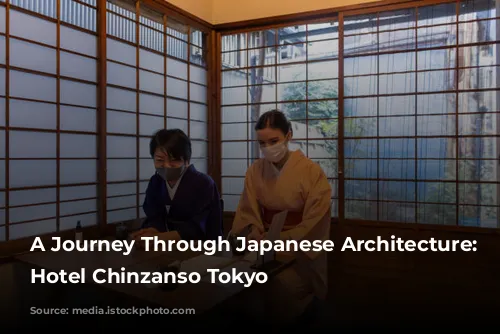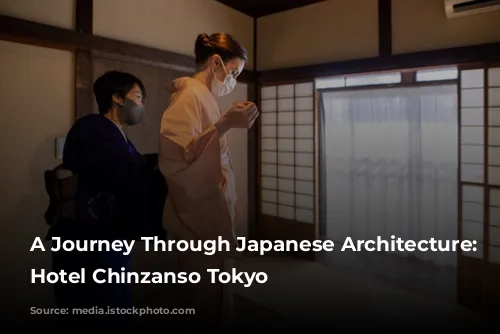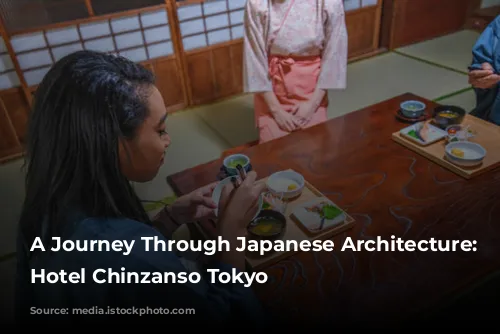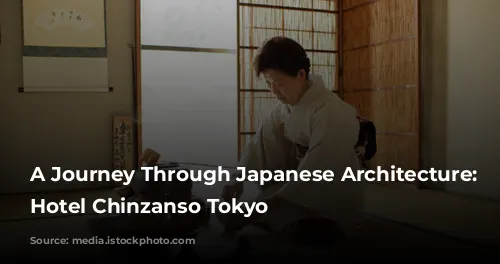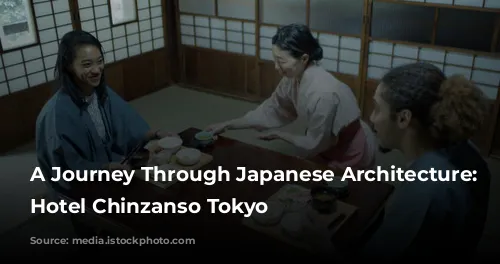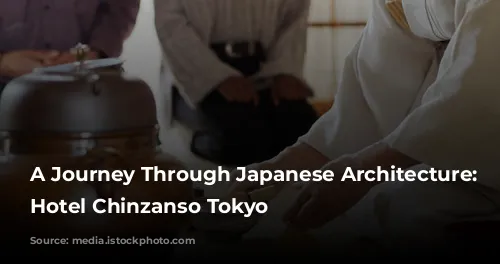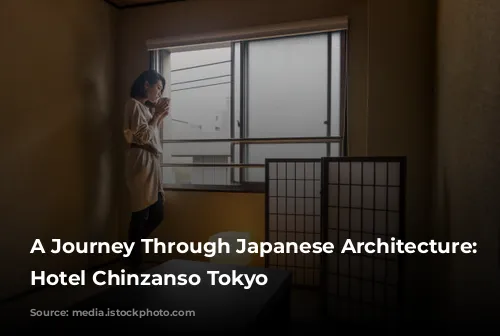Step into a world of architectural wonders at Hotel Chinzanso Tokyo! This haven in the bustling metropolis offers more than just a comfortable stay; it’s a captivating journey through the diverse and captivating world of Japanese architecture.
Time-Traveling with the Three-Story Pagoda
The iconic Three-Story Pagoda, also known as Entsukaku, is one of only three ancient Buddhist towers in Tokyo. This marvel of history, originally from a temple in Hiroshima, was relocated to Chinzanso Garden in 1925. The relocation was a tribute to the former owner’s vision of a serene sanctuary and Baron Fujita’s desire to enrich the garden with historical treasures. The pagoda, miraculously surviving both the Great Kanto Earthquake and World War II, is a testament to resilience.
Upon closer inspection, you’ll notice the intricate, unpainted woodwork that gives the pagoda a timeless beauty. The door to the altar unveils a statue of Kanzeon Bosatsu, the goddess of mercy, while the red and green-painted ceiling, restored to its original splendor, adds a touch of vibrancy.
Surrounded by modern buildings and Tokyo’s towering skyscrapers, the Three-Story Pagoda stands as a surreal beacon, a bridge between the city’s modern pulse and the echoes of centuries past. Its illuminated silhouette at night adds an ethereal charm, making it a truly captivating spectacle.
A Sacred Shrine in the Heart of the City
Nestled within the tranquil garden, the Shiratama Inari Shrine, originally from Kyoto’s Shimogamo Shrine, is a testament to the enduring spirit of Shinto beliefs. This altar, dedicated to Inari, the deity of crops and prosperity, is adorned with statues of white foxes, the messengers that carry prayers to the deity.
The shrine’s entrance is marked by a vermillion torii gate, a quintessential feature of Shinto architecture that symbolizes the transition from the mundane to the sacred. The shrine’s wooden construction blends seamlessly with the surrounding greenery, reflecting Shinto’s deep connection with nature.
Experiencing Traditional Japanese Interiors
At Hotel Chinzanso Tokyo, you can immerse yourself in the elegance of traditional Japanese interiors. Kinsui, the garden’s ryotei restaurant, offers a refined dining experience enhanced by the soothing sounds and sights of nature. The spacious private rooms, featuring tatami mats, sliding doors, and tokonoma alcoves, embody the understated elegance of classic Japanese interiors.
Other dining venues like Mucha-an and Mokushundo, over a century old, offer a retro charm. These renovated structures transport you back in time, allowing you to savor the intimate atmosphere of traditional wooden interiors. The soft lighting, characteristic of these spaces, highlights the vibrant hues of the garden, making every meal a sensory delight.
Nature’s Embrace in Architecture
Traditional Japanese architecture is deeply intertwined with nature, as evidenced by the use of natural materials like wood, paper, and bamboo. The large windows, inviting in the sounds of nature and garden views, create an immersive connection with the outdoors. Even the rooms, separated from the garden, feature corners dedicated to seasonal flowers.
Where Tradition Meets Modernity
The Mori no miya Garden Sanctuary is a stunning example of contemporary Japanese architecture that honors tradition. This wedding ceremony hall, completed in 2017, blends Shinto shrine elements with a futuristic design. The ascending lines that converge at the center symbolize a future filled with happiness for the newlyweds.
The sanctuary’s wooden construction and rooftop garden blend seamlessly with the surrounding greenery, creating a harmonious space that celebrates both the past and the future.
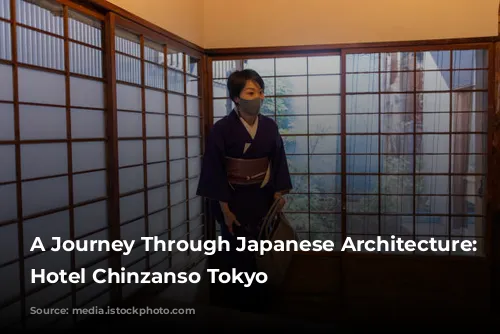
A Modern Oasis with Traditional Touches
Hotel Chinzanso Tokyo itself is a testament to the harmonious fusion of contemporary architecture and traditional Japanese elements. The hotel’s tasteful design, from the lobby to the rooms, creates a welcoming ambiance. The guestrooms, featuring balconies with expansive views of the garden and cityscape, showcase a thoughtful blend of Western and Japanese elements.
The lobby and rooms are adorned with exquisite Japanese accents, like Arita porcelain vases, Japanese woodblock prints, and Nishijin textiles. This fusion of contemporary comfort and traditional charm embodies the values of modern Japan, welcoming the world with open arms while cherishing its rich heritage.
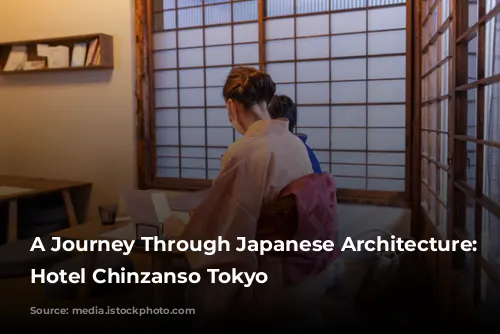
Discovering the Hidden Treasures of Chinzanso Garden
The architectural exploration of Chinzanso Garden doesn’t end with the buildings we’ve highlighted. Zangetsu, a century-old tea ceremony house relocated from Hakone, adds another layer of history to the garden. Historical stone lanterns, remnants of the past, stand as silent witnesses to time. Buddhist statues and structures, and a beautiful vermillion bridge, add to the garden’s tapestry of architectural wonders.
A guided tour of the garden unveils the fascinating connection between Chinzanso Garden and the history of Tokyo. As you wander through this architectural haven, you’ll feel as if you’ve embarked on a journey through the heart of Japan. Hotel Chinzanso Tokyo offers more than just a stay; it’s an immersion in the rich and diverse world of Japanese architecture.
